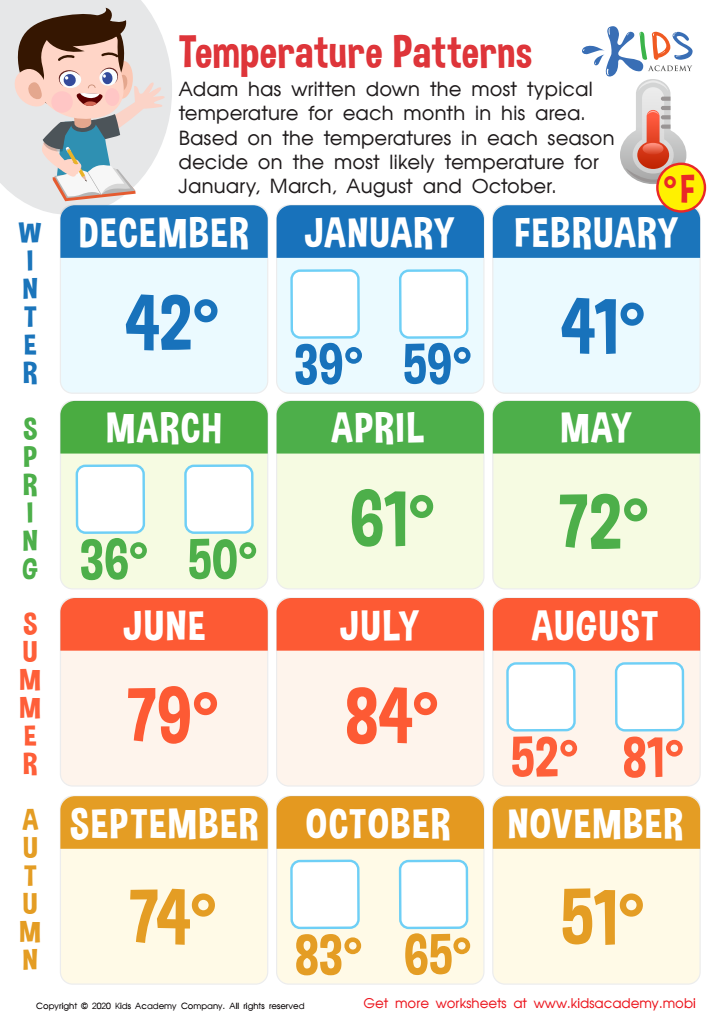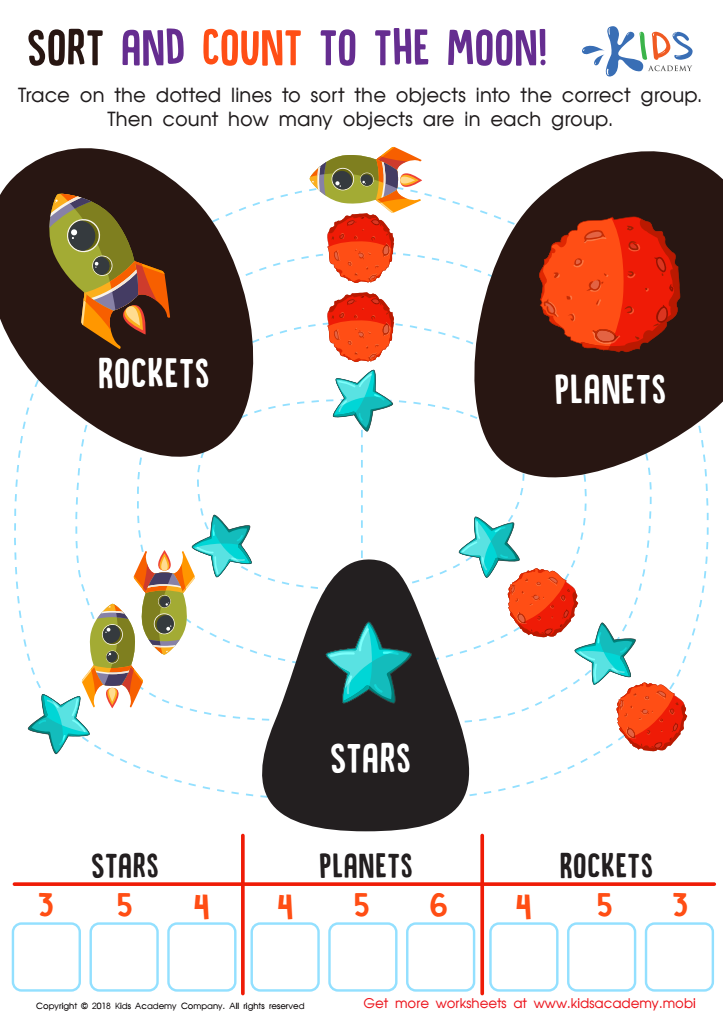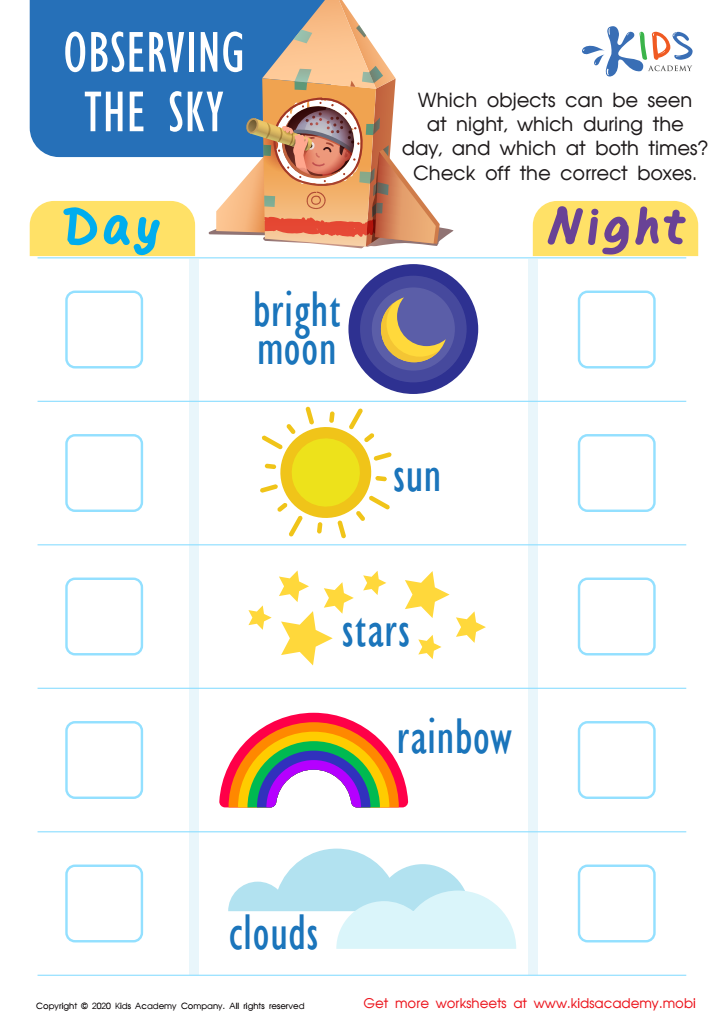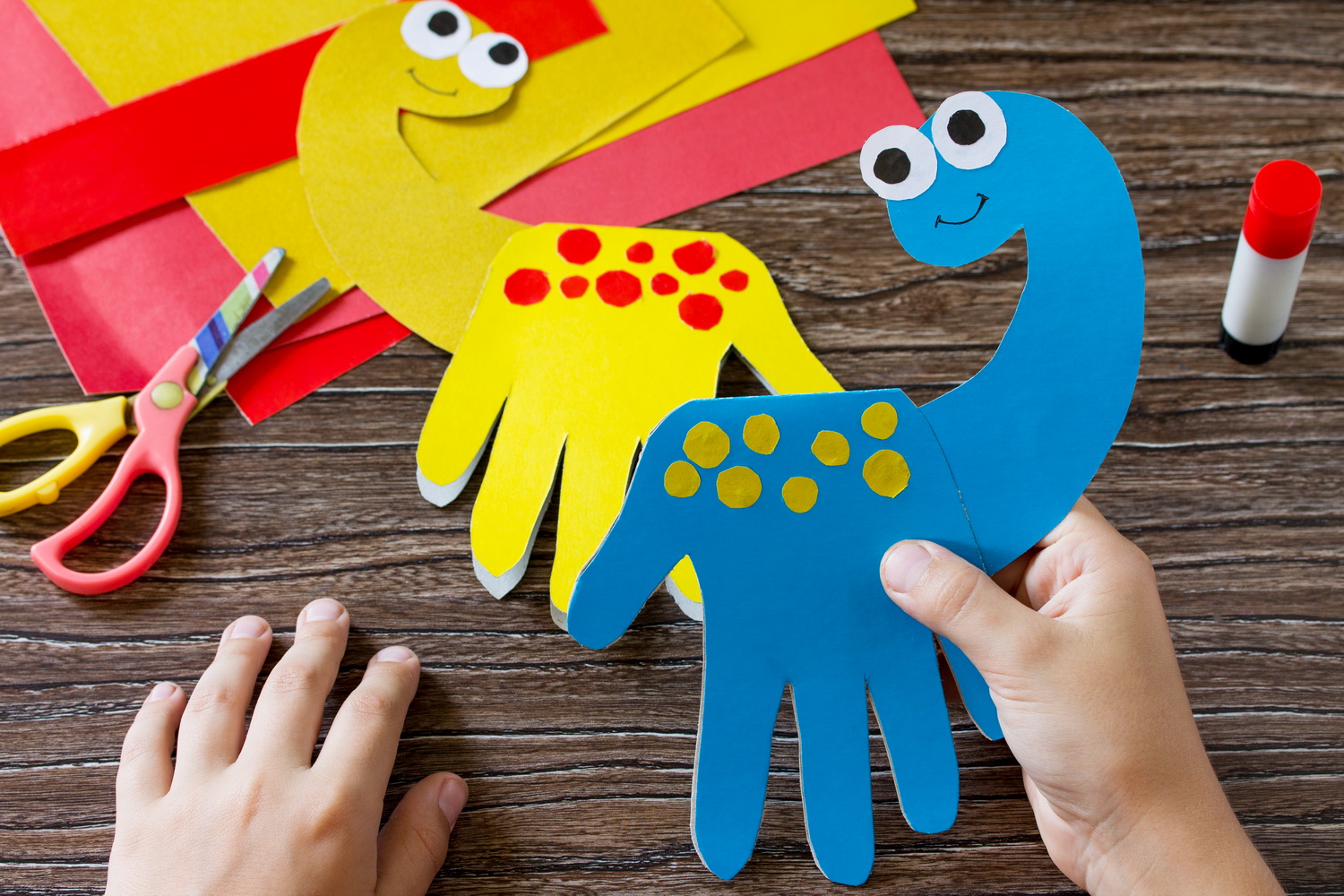Recognizing Patterns Normal Science Worksheets for Ages 5-9
3 filtered results
-
From - To
Enhance your child's cognitive abilities with our "Recognizing Patterns Normal Science Worksheets" specifically designed for ages 5-9. These engaging and interactive worksheets help young learners identify, predict, and create patterns, fostering essential problem-solving skills and logical thinking. Each activity is crafted to be fun and educational, encouraging kids to observe and analyze patterns in nature, numbers, and shapes. Perfect for classroom or home learning, these worksheets support the early development of mathematical and scientific concepts through playful exploration. Visit our webpage to unlock endless learning opportunities and make pattern recognition an enjoyable experience for your child!


Temperature Patterns Worksheet


Sort and Count to the Moon Worksheet


Observing the Sky Worksheet
Parents and teachers should care about helping children recognize patterns in normal science for ages 5-9 because it lays the foundation for critical thinking and problem-solving skills essential for their overall intellectual development. During these formative years, children’s brains are exceptionally adept at absorbing information and identifying connections. Recognizing patterns allows children to make predictions, understand relationships, and grasp basic principles of order and causal relationships which are fundamental in science.
Introducing children to pattern recognition helps them to notice recurring elements in their environment and in their subjects of study. This becomes crucial for early scientific exploration, where consistent phenomena encourage curiosity and facilitate comprehension of core concepts. Pattern recognition boosts cognitive development, enhances memory, hones observational skills, and improves mathematical reasoning – all vital skills as they advance in their education.
Additionally, engaging young minds with patterns in scientific contexts, such as observing seasonal changes, learning about life cycles, or understanding weather trends, not only makes learning enjoyable but also develops a child’s analytical abilities and nurtures a lifelong passion for discovery. In fostering these skills, parents and teachers equip children with tools that extend beyond the classroom, supporting their future learning experiences and everyday problem-solving capabilities.
 Assign to My Students
Assign to My Students




















